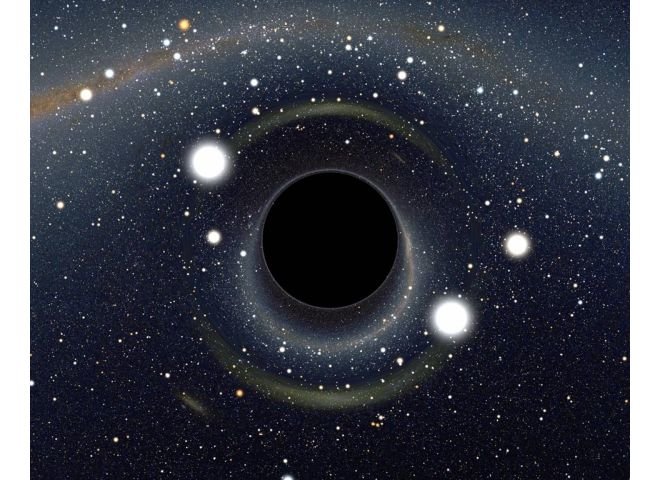
One place that matter ends up is in a black hole. Think of a black hole as nature's landfill — any mass that comes close enough gets sucked in and becomes part of the slightly bigger black hole.
What happens to all of that mass? It never reappears because even the tiniest electron gets stuck inside forever. What happens in a black hole stays in a black hole.
In a famous paper, Stephen Hawking showed that black holes evaporate over time. It's now well established that black holes glow slightly by emitting long wavelength light, but the intensity of this radiation is so low that it can't be detected from far away.
The important point here is that if you wait a million or billion times the current age of our universe, the black holes eventually will disappear by converting their mass into Hawking radiation.
Now, imagine if, over time, all of the matter of the universe eventually ended up being swallowed by black holes. The net result is that all of that matter would end up as Hawking radiation and disappear.
If your head is spinning, you're not alone. It's an eerie concept that all matter in the universe could disappear into nothingness. It's just as unsettling to say that all matter came from nothingness in the Big Bang.
These ideas are not new, but I was recently reminded of them at the April meeting of the American Physical Society, where the celebrated physicist Ed Witten gave a presentation.
In his talk, he showed us how Hawking radiation fits into the ideas of quantum field theory, and it got me thinking about how matter gets recycled via black holes.
There now is good evidence that a supermassive black hole, one with more than a million times the sun's mass, is at the center of most galaxies. What is less well known is how many smaller black holes are distributed amid the stars in our galaxy.
Now that we can detect gravitational waves emitted from black hole mergers, we will have a better way to estimate the number of smaller black holes that have masses more than 10 times the sun's.
The announcement by the LIGO (Laser Interferometer Gravitational-Wave Observatory) that gravitational waves were detected from a merger of two black holes, each about 25 to 35 times the mass of the sun, suggests that there are many such binary pairs of black holes in our own galaxy. Soon, more quantitative information on the number of these will be available.
It might take a long time (many times the current age of our universe — long after our sun burns out), but black holes could end up absorbing a significant fraction of the matter in the universe. Reliable calculations of how large this fraction might be are not yet possible, but it's likely that future astronomers will be able make estimates.
It seems that nature has its own version of a recycling program. Matter was made during the Big Bang, and at least some of that matter ends up as black holes. Over time, those black holes evaporate by emitting Hawking radiation.
It's too simple to say that what came from nothingness ends up as nothingness, but for at least some of the matter in the universe, this appears to be true.
Kenneth Hicks is a professor of physics and astronomy at Ohio University in Athens.



Isn't it a matter of perception? It's all just 'radiation' anyway, right? Coming and going... from 'darkness' into 'light' and back into 'darkness'.